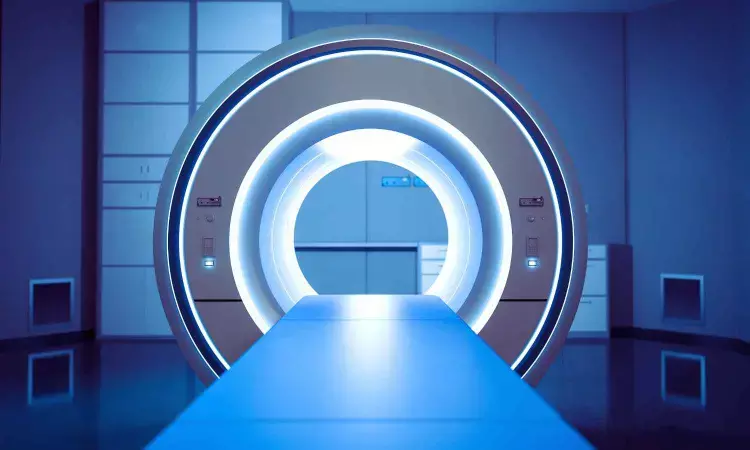- Home
- Medical news & Guidelines
- Anesthesiology
- Cardiology and CTVS
- Critical Care
- Dentistry
- Dermatology
- Diabetes and Endocrinology
- ENT
- Gastroenterology
- Medicine
- Nephrology
- Neurology
- Obstretics-Gynaecology
- Oncology
- Ophthalmology
- Orthopaedics
- Pediatrics-Neonatology
- Psychiatry
- Pulmonology
- Radiology
- Surgery
- Urology
- Laboratory Medicine
- Diet
- Nursing
- Paramedical
- Physiotherapy
- Health news
- Fact Check
- Bone Health Fact Check
- Brain Health Fact Check
- Cancer Related Fact Check
- Child Care Fact Check
- Dental and oral health fact check
- Diabetes and metabolic health fact check
- Diet and Nutrition Fact Check
- Eye and ENT Care Fact Check
- Fitness fact check
- Gut health fact check
- Heart health fact check
- Kidney health fact check
- Medical education fact check
- Men's health fact check
- Respiratory fact check
- Skin and hair care fact check
- Vaccine and Immunization fact check
- Women's health fact check
- AYUSH
- State News
- Andaman and Nicobar Islands
- Andhra Pradesh
- Arunachal Pradesh
- Assam
- Bihar
- Chandigarh
- Chattisgarh
- Dadra and Nagar Haveli
- Daman and Diu
- Delhi
- Goa
- Gujarat
- Haryana
- Himachal Pradesh
- Jammu & Kashmir
- Jharkhand
- Karnataka
- Kerala
- Ladakh
- Lakshadweep
- Madhya Pradesh
- Maharashtra
- Manipur
- Meghalaya
- Mizoram
- Nagaland
- Odisha
- Puducherry
- Punjab
- Rajasthan
- Sikkim
- Tamil Nadu
- Telangana
- Tripura
- Uttar Pradesh
- Uttrakhand
- West Bengal
- Medical Education
- Industry
MRI and Ultrasound Emerge as Reliable Non-Ionising Options for Dental Implant Planning: Study

A systematic review and meta-analysis published in International Journal of Implant Dentistry found that Magnetic Resonance Imaging (MRI) matches cone-beam CT (CBCT) in hard-tissue accuracy—showing minimal geometric deviations in implant positioning—while ultrasonography significantly outperforms CBCT in assessing soft-tissue dimensionsSpringerOpenSciety. Specifically, MRI's deviation in implant tip placement averaged 0.3 mm (95% CI −0.08 to 0.68 mm), and entry-level deviation was 0.38 mm (95% CI 0.04 to 0.71 mm); angulation deviation was just 0.81° (95% CI −0.50 to 2.12°), indicating close alignment with CBCT standards. By contrast, ultrasonography delivered soft-tissue accuracy with a remarkable mean deviation of only 0.04 mm (95% CI −0.04 to 0.13 mm)
These findings point to MRI and ultrasonography as promising, radiation-free alternatives for dental implant imaging. MRI stands out for its hard-tissue fidelity, while ultrasound excels in soft-tissue resolution—especially useful in scenarios where CBCT's visualization is limited by artifacts or when minimizing radiation exposure is essential.
That said, the study emphasizes the pressing need for standardized imaging protocols to ensure consistent clinical workflows and reliable diagnostic outcomes.
Dr. Shravani Dali has completed her BDS from Pravara institute of medical sciences, loni. Following which she extensively worked in the healthcare sector for 2+ years. She has been actively involved in writing blogs in field of health and wellness. Currently she is pursuing her Masters of public health-health administration from Tata institute of social sciences. She can be contacted at editorial@medicaldialogues.in.
Dr Kamal Kant Kohli-MBBS, DTCD- a chest specialist with more than 30 years of practice and a flair for writing clinical articles, Dr Kamal Kant Kohli joined Medical Dialogues as a Chief Editor of Medical News. Besides writing articles, as an editor, he proofreads and verifies all the medical content published on Medical Dialogues including those coming from journals, studies,medical conferences,guidelines etc. Email: drkohli@medicaldialogues.in. Contact no. 011-43720751


